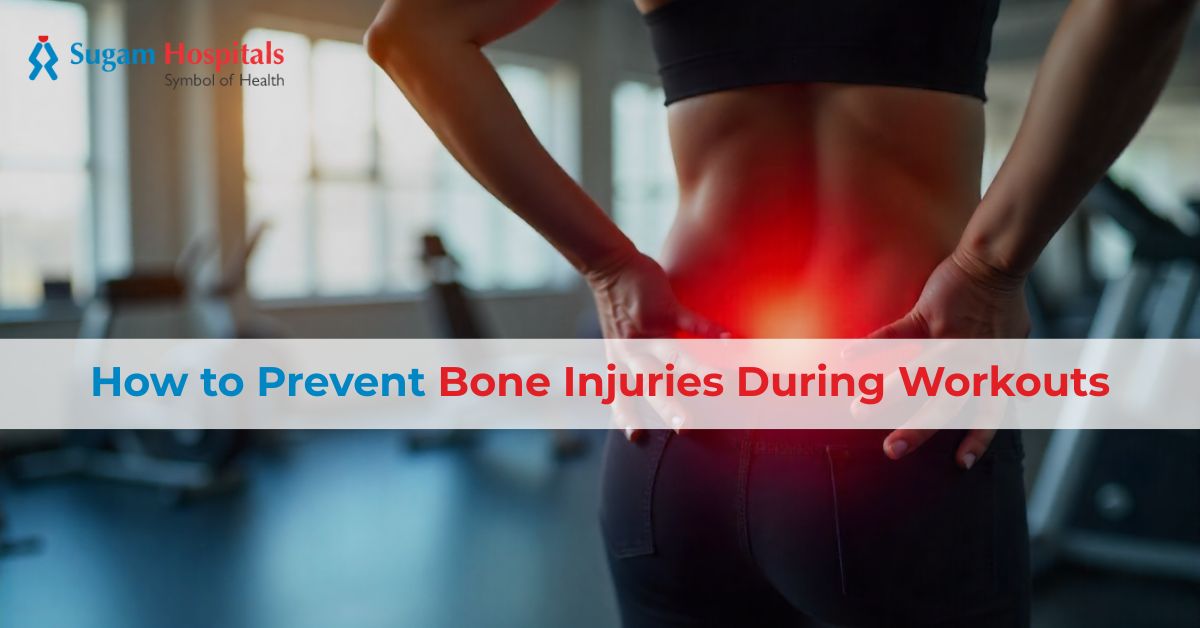How to Prevent Bone Injuries During Workouts

How to Prevent Bone Injuries During Workouts
September 20, 2025 by adminWorking out is undoubtedly one of the best ways to improve your strength, endurance and long-term health. Unfortunately, if you do not take appropriate care before, during and after your workouts, exercise can also create stress on your bones and joints that can lead to an injury and can be debilitating for weeks or months. Some soreness after a workout is to be expected; however, bone injuries should never be ignored, such as stress fractures and joint injuries should never be ignored, such as strains or aches.
This blog will highlight practical advice and tips to protect your bones when you exercise and also how to be sure your workouts are as safe and productive as possible.
Warm Up & Cool Down: The Basics of Injury Prevention
Jumping into heavy workouts is often a mistake beginners make. Warming up gets your muscles, ligaments and joints ready for the upcoming activity by elevating blood flow gradually. Light cardiovascular work for 5–10 minutes followed by some dynamic movements will loosen painful stiff areas.
Cooling down will happen after your workout by gently stretching the areas you just worked or by performing a light activity to avoid stiffness after working out and additional strain on your bones and joints.
Warming up and cooling down have numerous key benefits:
- Enhances range of motion and flexibility.
- Prepares your joints for greater intensity exercise.
- Decreases the chance of soreness later that day or the next.
Increase Strength Slowly
People get hurt when they increase their efforts too quickly. Bones do adapt to stress, but sudden overload can cause a stress fracture, especially in weight-bearing areas such as the shins, hips or feet. A safe progression is to increase the intensity of workouts 10% or less per week. A consistent, progressive strategy is much more valuable than quickly increasing your efforts only to have you deal with an injury that sets you back.
Significance of Technique
Poorly positioned posture or lifting technique can clearly damage bone or the supporting structures. No matter the activity, squatting, running or lifting weights, static postural alignment is critical.
Examples of poor technique:
- Heavily landing on the heels while running → shin splints.
- Rounding the back while deadlifting → spinal strain.
- Hyperextending the joint while stretching → ligament damage.
Getting assistance from an exercise professional early in the process can help you develop good habits that protect your skeletal health.
Shoes & Supportive Equipment
Shoes are not just a fashion statement; they offer shock absorption and support. Wearing the incorrect shoe can redirect stress to your bones, especially your knees and ankles.
Some tips on how to choose supportive equipment:
- For runners, cushioned shoes matching their stride are a good option.
- For weightlifters, flat-soled shoes assist with stability.
- Supportive accessories such as wrist straps or knee sleeves reduce stress from heavy lifting.
Nutrition: Fuel to Grow Strong Bones
While exercise is important, your bones also rely on proper nutrition to stay strong. You need to consume enough calcium and vitamin D for good bone density as well as to help your bones resist fracture. Protein will also help muscle repair following exercise, which in turn supports the bones.
The key nutrients for healthy bones are:
- Calcium: To make the bones denser.
- Vitamin D: To help your body absorb calcium.
- Protein: To assist with your muscles to recover to help your joints.
Hydration is also important to bone health, as dehydration can diminish your joint lubrication and make the joints stiffer, increasing the chance of injury.
Observe What Your Body is Telling You and Take a Break
Overtraining is a silent foe of bones’ health. Those who ignore pain and fatigue often associate time off with a serious injury. Small clues like persistent shin or knee swelling are more problematic than most runners recognize.
Rest days are not unproductive days; they are crucial for your bones and muscles to recover and become stronger. There doesn’t have to be a lot of “structure” to recovery outside of sleep, but sleep needs to be quality recovery in other words, the sleep you are getting needs to be restorative.
Preventing injuries to your bones during exercise is about finding a balance between warming up, maintaining proper technique, training progressively and respecting your body’s cues. The final layer of support to those strategies is having the right footwear, nutrition and rest adding to the strong base you need for a safe exercise practice. At Sugam Hospital, we believe in and promote both treatment and preventative measures for healthy bone and joint health. If you’re seeking a well-trained orthopedic doctor Chennai, your preventative goals, ability to train safely and fitness success is our commitment to you.

